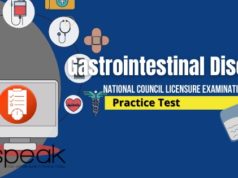- B *Rationale: Home deliveries are not recommended by the government even it is assisted by a health professional or a trained hilot Maternal complications leading to maternal mortality has been found to be due to this
- C *Rationale: Rural health units do not have the capacity and the facilities to facilitate CS delivery. Aside from that women with a history of CS deliveries usually have a previous history of serious or potentially serious complications, thus they are usually advised to seek consult to the nearest hospital during their prenatal period to prepare them for their delivery.
- B *Rationale: Within the first 30 seconds, the objective of the nurse is to dry and provide warmth to the newborn to prevent hypothermia.
- D *Rationale: MDG 4 focuses on reducing child mortality and MDG 5 corresponds to the improvement of maternal health.
- D *Rationale: Only A & C are correct; Every pregnancy is adequately managed throughout its course, not only during prenatal and postpartum periods
- D *Rationale: Fogging is not recommended for it only scares away mosquitoes and it even causes some respiratory consequences; use of mosquito nets, coils, and repellants are options but the best preventive measure is through searching and destroying breeding sites by cleaning the surroundings.
- C *Rationale: DHF Grade II includes the signs of Grade I plus spontaneous bleeding. Choice A refers only to signs and symptoms found in Grade I, while options B and D correspond to signs and symptoms of Grade III.
- D *Rationale: All the above options should be included in the plan of care for a client with DHF to easily identify and prevent bleeding, and to prevent the occurrence of dehydration.
- A *Rationale: By testing through blood smear DHF will be confirmed. The rest diagnostic procedures are not relevant to the confirmation process of this said disease.
- A *Rationale: Thrombocytosis is not a manifestation of DHF instead there is depletion of thrombocytes in the system referring to as thrombocytopenia; which can be evidenced by the prolonged bleeding time and petechial rashes.
- C *Rationale: Options A and B refer to what you should ask for during assessment, but what you really need to look for is if the child is lethargic – which is a danger sign. It also refers to objective data instead of subjective one as verbalized by the mother. Option D is asked if you are querying the child to have pneumonia or not.
- C *Rationale: Pink, since the child is suggested to be having very severe febrile disease under the high malaria risk management.
- B *Rationale: Abdomen is assessed for signs of dehydration in children; the rest do not give hints of dehydration.
- B *Rationale: At birth, the child should have received BCG and OPV-0; at 6 weeks, the child can receive DPT+HIB-1, Hepatitis B1, OPV-1 already; and at 10 weeks, DPT+HIB-2, Hepatitis B2, and OPV-2 can be given to the child. The next immunization is when the child reached the age of 14 weeks.
- C *Rationale: The right proportion in making sugar water is 200 ml of clean water with 4 tsp of sugar.
- D *Rationale: There are three strategic thrusts involving financial risk protection, improved access to health care delivery, and attainment of health-related MDGs which are MDGs 4 and 5.
- C *Rationale: Measles-Rubella Campaign was conducted last 2011 to decrease the incidence of MR in the country and to coincide with the MDGs goal of reducing child mortality.
- *Rationale: It is only to improve the access of poor communities to quality healthcare and services, not to supply their needs; Take note also that community health nursing is focusing on the development of self-reliance of the community.
- A *Rationale: Human Resources for Health refer to health professionals such as midwives, nurses, who could provide for their needs in the community. They will be skilfully trained to be competent in the provision of health care at every family’s doorsteps as much as possible.
- C *Rationale: It is a group of healthy volunteers led by the midwife in the barangay. The midwife tracks the eligible population for health care services while the rural health physician only supervises the community health team.
- C *Rationale: The constant presence of an infectious agent within a specific area is called endemic. Pandemic refers to an epidemic that has widely spread in different places; the epidemic is the occurrence of a disease condition more than as expected, and sporadic is defined as the occurrence of disease in occasional periods only.
- C *Rationale: Assessment is always prioritized in doing nursing care. There are guidelines from which the assessment of type, size, and appearance of bite is classified prior to referral to Animal Bite Center. This classification is the basis for the treatment of anti-rabies vaccine as indicated by the physician. Provision of dim and non-stimulating room and isolation precautions are only given during the later stages of rabies virus invasion in the system.
- B *Rationale: Sputum Examination is usually done early in the morning to detect the presence of Mycobacterium Tuberculosis. Chest X-ray is another confirmatory procedure but could be done any time of the day. On the other hand, bronchoscopy is an invasive procedure that confirms the extent of PTB.
- B *Rationale: An elevated ASO titer, positive throat culture for strep, and an increase in WBC differential count especially the eosinophils conclude the presence of scarlet fever in the system.
- D *Rationale: Option A refers to DHF, B for Scarlet fever, and C for Measles.








what is the answer in number 18?
I was very pleased to uncover this website. I want to to thank you for ones time for this
particularly fantastic read!! I definitely really liked every
little bit of it and I have you saved as a favorite to
check out new things on your web site.
Welcome 🙂